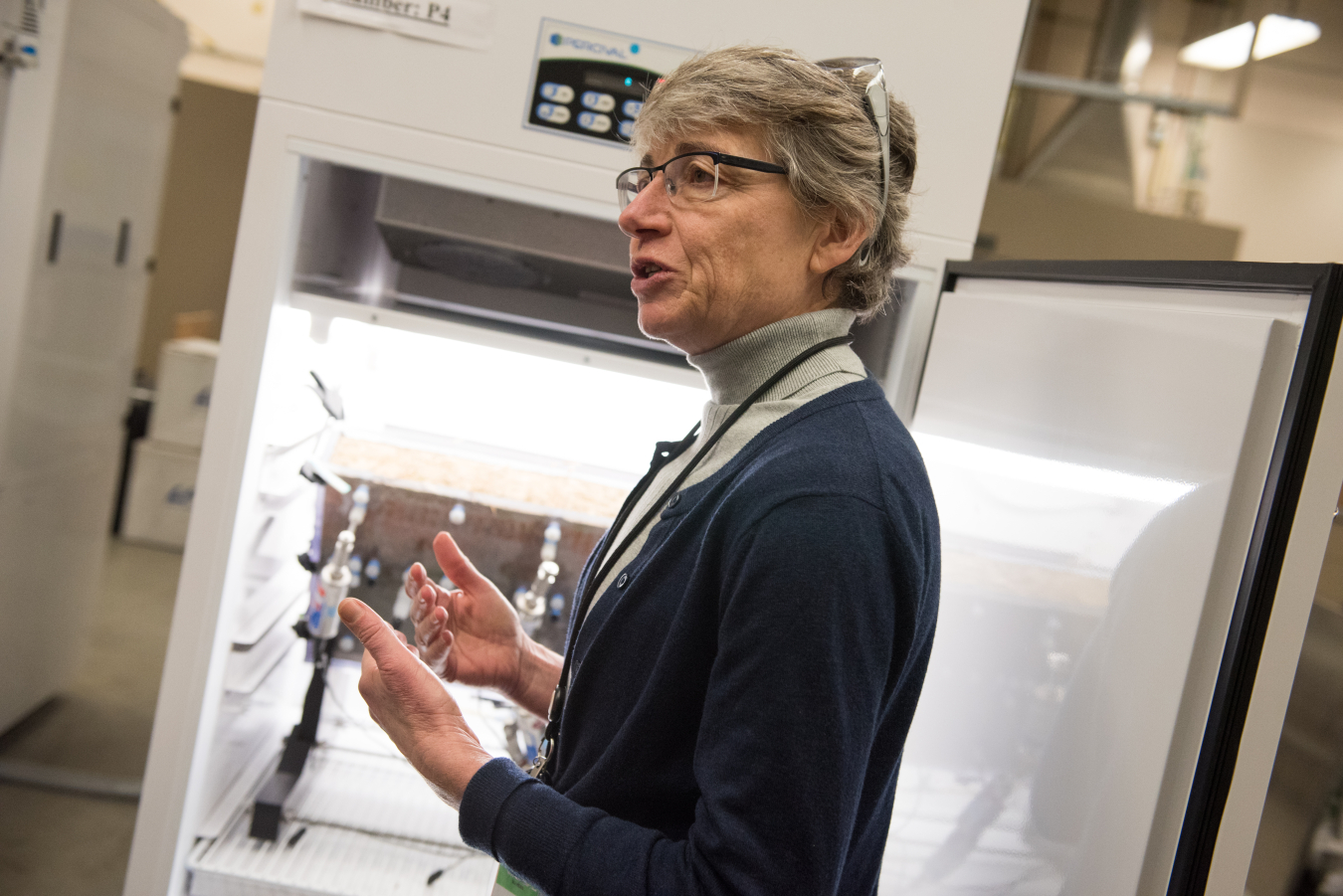Learn why Dr. Nancy Hess loves her job as the deputy for user science areas for the Environmental Molecular Science Laboratory at PNNL.
September 11, 2019
Dr. Nancy Hess leads the development and implementation of the strategic vision for the Environmental Molecular Science Laboratory’s (EMSL’s) user program in environmental and biological sciences. She is the deputy for user science areas at EMSL, which is located at Pacific Northwest National Laboratory (PNNL) in Richland, Washington. For nearly 30 years, the thrust of Dr. Hess’ research has been the application of molecular-level spectroscopic techniques to problems where determination of the local structure and chemical state of molecules or materials determines their chemical or physical behavior. She has also participated in structural biology research on DNA repair proteins and environmental restoration characterization tasks, including actinide speciation in geological environments and Hanford tank sludge and supernatant liquid above it. She obtained her PhD in geology from the University of Washington.
What inspired you to work in STEM?
I have always been fascinated by the processes that determine “why things are” across all scales of space, time, and energy—from why is that mountain there to why do proteins fold. There is a natural beauty that accompanies the world we experience. Understanding how these processes operate really reaches into physics, chemistry, and biology. And having a reasonable foundation in math helps too!
What excites you about your work at the Energy Department?
My work at one of the Department of Energy’s (DOE’s) user facilities means that not only are there the best instruments available but also some of the most creative scientists to work with. In addition, leading scientists from around the world come to work on challenging questions that they cannot address without these capabilities and expertise. I am excited both by the diversity of science and the importance of addressing these challenges to provide sustainable solutions to the nation’s energy and environmental challenges.
How can our country engage more women, girls, and other underrepresented groups in STEM?
The importance of seeing women and underrepresented groups being successful in these careers should not be underestimated. It is important to have role models at all stages of education and professional careers so that young people can see their future selves being happy and successful. Great progress has been made, but we need to see more women and underrepresented groups at high levels of leadership too.
Do you have tips you'd recommend for someone looking to enter your field of work?
Today’s challenges really take a multidisciplinary approach. Having both sound expertise and broad understanding of other fields will help you not only develop novel solutions but also communicate with others on your research team. So, while you might specialize in one area of science, having a curious and restless mind is helpful.
When you have free time, what are your hobbies?
When I have free time, I love to be outside with my family and friends running, swimming, hiking, and sailing. When I need time to myself or have to be inside, I cook, read, knit, and do origami.
Learn more about our programs & resources for women and girls in STEM at /women

